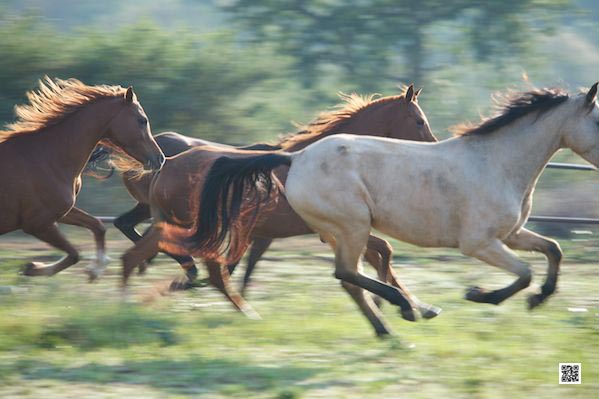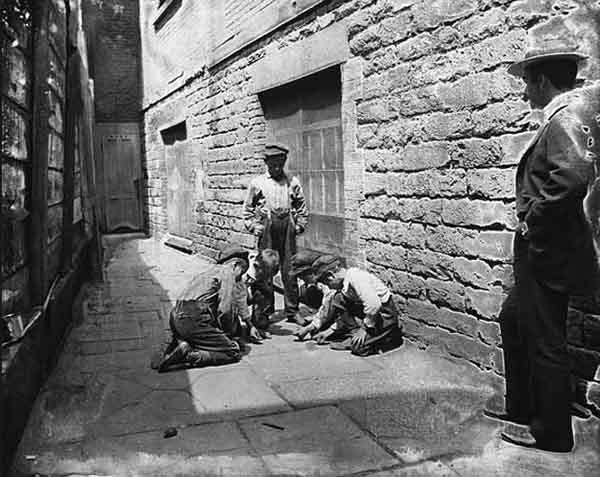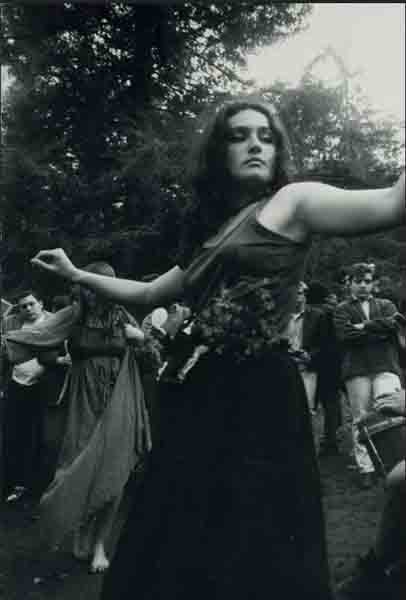17 March 2013
On Photo Safari: Animal Behavior
23/03/13 10:44 Filed in: Photo Safari

Photo safaris are of course for the purpose of seeing animals and photographing them, but that can be challenging at times, when the animals just are who they are and the photographer is too late to capture the action. This can be improved by a faster camera, a better trained photographer, yet more important by the photographer having knowledge about animal behavior.
During photographic safaris with photography courses this is an important part of the course. In order to do wildlife photography one needs to know the animals or at least have somebody on the vehicle who does. For example birds. Photographing a bird’s take off is the moment of capturing motion, beauty and dynamic, yet it happens very fast and the photo is often one of an empty branch or an empty piece of sky. This changes when the photographer knows that a bird ducks down for a moment before it takes off, like a skydiver before jumping out of the plane. Then you only need to start shooting the moment the bird ducks down and you will have the take off.
Another example is lion movement. Lion tend to rest during the day and get active when it cools down in the late afternoon. But it can be very tempting to be impatient and not wait when being at a lion sighting and they are all not moving an inch and it becomes very boring. Stay with them when you see that they start grooming and yawning. This is a clear sign that they will get up soon and that is when the action comes and movement happens.
In case this sounds all new don’t worry. There are rangers on the vehicles who know the animals. Learn from them about animal behavior and your wildlife photography will improve and stress to get it right will subside.
Happy snapping and wildlife watching!
Ute Sonnenberg for www.rohoyachui.com
The Paradox of Photographing People's Lives
22/03/13 10:05 Filed in: Photography & Art | Insights & Opinion

Sebastiãno Salgado is an amazing photographer, traveling the world photographing people’s lives in difficult circumstances. His images go deep, show the people’s struggle and the respect he feels for them. Sebastiãno Salgada is only one of a number of photographers capturing the lives of the impoverished and unfortunate with respect and great artistic skills. And we as the viewer and buyer love the images and admire the photographers.
But what makes the photographers choose these subjects and what makes us the viewer to love these images?
We want to feel that we live.
In the western world most of the people have a home, work and some sort of security in their lives. For most of the people there is no daily confrontation with danger and death, the own death, which is how we want to live, what we work for, to be safe. Yet it seems that we need the confrontation with death in order to be conscious that we live. One can do bungee jumping or skydiving, do video gaming or embark on adventures themselves and one can also look at art and photographs like from Salgado. I don’t know if people from a dangerous gang controlled city area or an area with no water and food look at and love photographs that show suffering and death like Salgado’s images. They have it themselves, they experience it every day and they are conscious that they live, because they are confronted with the possibility of their own death every day. Or would they like to see the reflection of their own lives?
The paradox is that the need to feel that we live pays the ones who capture the suffering of others well and makes sure they have a secure life, which creates in return the need within them to go out and photograph again. Another phenomenon is that the further away the suffering and death happen the more the viewer seems to be able to love the photographs and to feel the situation of the people there. It seems to be hard to bear when it comes too close and that is completely understandable. The suffering the photographs show is unbearable and hard to cope with and at the end we all want to survive, physically and emotionally.
So, what does that mean? Will photography awards continue going to photographs that show suffering or will happy photos win as well? Will the world sustain its regions of poverty and suffering or will there be a time that efforts pay off and people have food and shelter?
I don’t know, we humans are funny creatures with a very complicated psychological constitution. Maybe it is part of the process of becoming human.
Do we need to feel guilty that we love these photographs? No. We seem to have a very good sense of when a photograph was taken with respect and compassion and the photos keep us aware that there is still a lot to be done in the world.
And how do photo safaris fit in here? Not? What do we experience on a photographic safari that is so addictive? Nature? This is probably something for another post.
Keep enjoying the spirit of photography and its deeper insights.
Ute Sonnenberg for www.rohoyachui.com
image above by Sebastiano Salgado
How to Accelerate Innovative Leadership with Photography
21/03/13 10:15 Filed in: B2B

Something is innovative when it is qualitatively new and in order to be an innovative leader, executing innovative leadership an innovative leadership tool is what is needed.
Times are fast, news spreads within seconds all over the world and high quality decisions need to be made quickly, having global impact on the company’s success and the life of people. The high quality demand in combination with time is tricky and asks for a tool that can manage both with the result of innovative decisions. The tool needs to serve innovative leaders and accelerate innovative leadership. This tool is photography.
Photography is easy, quick, reliable, insightful and last but not least also fun. And when there is fun, work and learning just goes easier. Instead of a long and tiring process photography makes it possible to get to the point quickly, unearths insights instantaneously and is incredibly easy to handle. It is applicable to all issues, processes, projects and leadership challenges, team buildings, HR tasks and in house training and coaching. The utilization of photography accelerates problem solving, strategic planning, product development and any other task a company is dealing with every day.
Use it, accelerate innovation and bring some fun into daily work. Well it is not quite a photographic safari experience, but there are pretty sure some Big 5 just around the corner of the office. It is about seeing, innovation is about seeing like Steve Jobs did and photography makes one see.
Happy accelerated seeing with photography!
Ute Sonnenberg for www.rohoyachui.com
Street Photography: Inspiration
20/03/13 08:47 Filed in: Photography & Art

As a response to an earlier post about Bill Brandt’s street photography, Steve Kenny and Jeanette DeMain provided some more inspirational street photographers to be worth looking at and they really are.
There is Jacob Riis, a Danish American who lived from 1849 to 1914. He is also called a social documentary photographer, trying to help the impoverished in New York City with his photographic and journalistic talent. So, he might be best characterized as a social reformer with a camera as his tool. His focus might not have been on composition and light in the artistic way, yet he saw a different light, the light in people and he wanted the light of these hidden away impoverished people and their life situation to be visible for all.

Swiss born and after World War II to the US emigrated photographer Robert Frank is another inspirational photographer, capturing the spirit of America in his book The Americans. He saw American life as overemphasized on money and America often as a bleak and lonely place (Wikipedia). While trying to capture the soul of America as he experienced it, he wielded a great artistic eye, reflecting in the composition of his photographs.

And then Dennis Hopper, an artistic multi talent. His snapping away is not only capturing famous people he was socializing and working with, his photographs also capture the spirit of time whenever he saw it. It might be even harder to acknowledge the photographic talent of Dennis Hopper when on most of his photographs are celebrities and one thinks its already a good photo because of that, yet they are also well composed and just taken at the right moment.

Between all these men finally a woman, Vivian Maier. Maier was a amateur street photographer who worked as a nanny in Chicago for 40 years. Her photographs remained unknown until they were discovered by John Maloof, a historian and collector only two years before she died. He said about Vivian Maier, “She was a Socialist, a Feminist, a movie critic, and a tell-it-like-it-is type of person. She learned English by going to theaters, which she loved. She wore a men's jacket, men's shoes and a large hat most of the time. She was constantly taking pictures, which she didn't show anyone.” Now look at her photos and see how great they are.

All these examples of great photographers, their journeys and their art can be of great inspiration to all of us. They show that art happens just in front of us, on our doorsteps, in our daily lives, we only need to start seeing it. And they show also that street photography is an important part of history, telling the story of time and people and sometimes they change the lives for some people too.
So, as mentioned in the earlier post, go out and snap away, make street photography part of your photography courses, go on photographic safari in your home town and find new Big 5 everyday!
Thank you Steve and Jeanette for the inspiration.
Keep enjoying photography!
Ute Sonnenberg for www.rohoyachui.com
Intuition Training Explained
19/03/13 08:36 Filed in: Intuition | Insights & Opinion

Intuition is not something we need to train for to have it; it is something that is always there, we only need to train ourselves to identify it and to utilize it.
Intuition is also often called gut feeling and without thinking about it we are using it or at least talking about it every day. How often do we have a gut feeling about something to happen and how often are we saying to our friends and colleagues “I knew this would happen”? Pretty much every day, about something or somebody in our personal life or work life.
Many leaders in corporate, or how we call them nowadays thought leaders, base their decisions on intuition. They might not call it like that for the outside world, but for themselves they know they do. That does not mean that they do not look at the numbers and it does not mean that they do not think businesswise, but their intuition lets them look at the right numbers, lets them point out numbers that are not quite right, although they look good. Their intuition lets them ask the right questions, lets them dig deeper where others don’t, their intuition helps them to make the right investments and alerts them when they should step out.
Many of them got to success and successful use of their intuition by falling and standing up, learning by making mistakes and by making right decisions to understand how their intuition talks to them. But even those who are already conscious of the value of their intuition, are mostly not using its full potential and those who are not yet aware of the benefits of their intuition are missing out great opportunities of success.
For the full use of ones intuition and to tap into its enormous resources, one can be trained. The training enables in essence the trainee to see and hear clearly what information is offered by his/her intuition and how to utilize it in daily life and work. And because intuition is something non-physical and non-visible, it helps a lot to make it physical and visible in order to see and hear what it’s trying to provide.
It is easier than it sounds to make something non-physical and non-visible, physical and visible, one only needs a camera. It is that strength of photography together with its easy access and easy handling what makes it the appropriate tool to train intuition. Add an accelerating and supporting environment to that and an intuition training of only 4 days is ready to jump start the beneficial use of intuition for personal and business purposes.
The intuition training enables business leaders of all trades to communicate on intuition level, turns team buildings into new qualities and achieves all that within the relaxed atmosphere of a photographic safari with a photography course, yet the photography course is a bit different.
The technical photography skills of the delegates are not of importance, the camera only needs to be digital. The daily routine is the routine of a photographic safari with a game drive in the morning and a game drive in the afternoon and the delegates will snap away like on a holiday, yet there is a big difference. For every game drive an assignment will be given to the attendees, an assignment only the unconscious is able to accomplish. This makes it easy for the conscious mind, because it can thoroughly enjoy the landscape and animals while the unconscious does the work. To see what the unconscious has worked out, the images will be uploaded back at the lodge and explored according to the assignment. Each assignment has the character of a learning cycle and guides the delegates step by step in identifying the language of their intuition and the information their intuition is providing. The learning cycles of each assignment are part of the bigger learning cycle, the 4 days event itself, starting with departure in Nairobi and ending with arrival in Nairobi on the last day. Within this greater learning cycle the delegates are taken into a different hemisphere, the intuition level and the northern hemisphere where the smaller learning cycles of the game drive assignments take place.
As a result of the intuition training the delegates are able to communicate without words, thoroughly on intuition level, or energy level, and to benefit from the information the intuition level provides to suit their needs in personal life and business. Success becomes sustainable, fueled by the endless resources of the intuition level, also called the endless resources of the unconscious level or energy level as it is called in quantum physics.
Photography is the innovative tool to easy access these resources for beneficial use. It makes photography the most potential tool of the future and the intuition level the never-ending resource of information and knowing to achieve aspired goals.
We all got access to these resources, lets use them.
Ute Sonnenberg for www.rohoyachui.com
Alfred Wertheimer: Photographing Nina Simon
18/03/13 15:06 Filed in: Photography & Art

Photographer Alfred Wertheimer was hired by Anne Fulchino, the person who hired him already for the famous photo series of young Elvis Presley, in the mid 60ies to photograph Nina Simon, the beautiful and uncompromising singer from North Carolina.
By photographing Nina Simon, Wertheimer employed his famously characterized “available darkness” instead of “available light” approach to photography, a way to approach and create contrast in an image. It is probably an interesting way to capture the soul of the subject in this case Nina Simon and a variation of what one learns in photography courses, yet its part of the same, the relation of light and darkness.
Nina Simon would turn 80 this year. Unfortunately she passed away already in 2003 in the south of France, but her songs are just as great as in the 60ies and the photographs tell a story of a special woman.
Often a photographer’s life and work story gets connected with other artist’s lives and work, like Wertheimer with Elvis Presley and Nina Simon and the Annie Leibovitz with the Rolling Stones.
One never knows for what purpose one is called to photograph somebody. The person might be the next superstar
Happy snapping.
Ute Sonnenberg for www.rohoyachui.com
ePhoto Book: Middle-Earth
17/03/13 12:23 Filed in: Photography & Art

“Middle-Earth is a far away place where elves look after those who embark on journeys and where nature caresses the courageous.”
The images were taken during a series of photography courses in New Zealand, which might have felt like an unexpected journey with hobbits about to emerge any minute.
Travel to Middle-Earth and embark on a journey. View the book here.
Ute Sonnenberg for www.rohoyachui.com